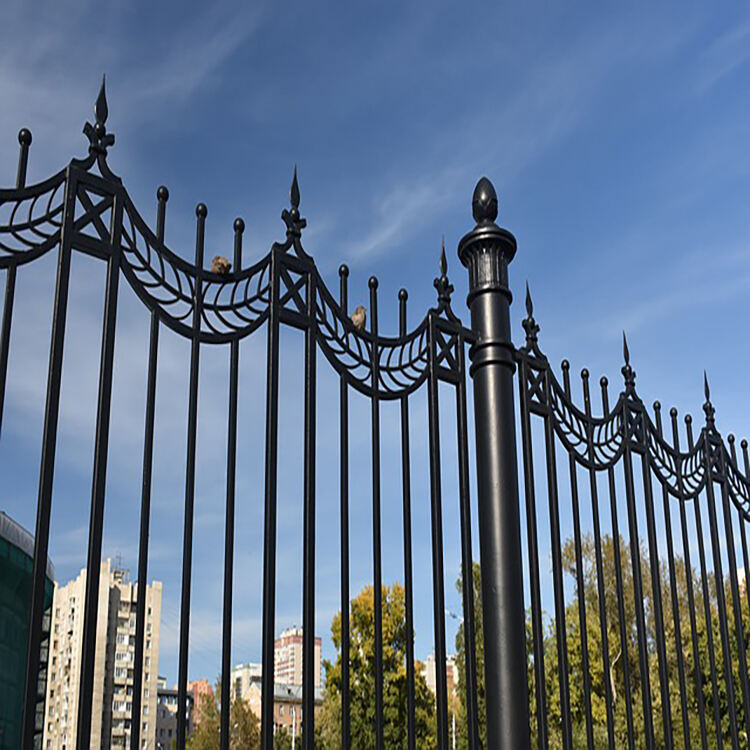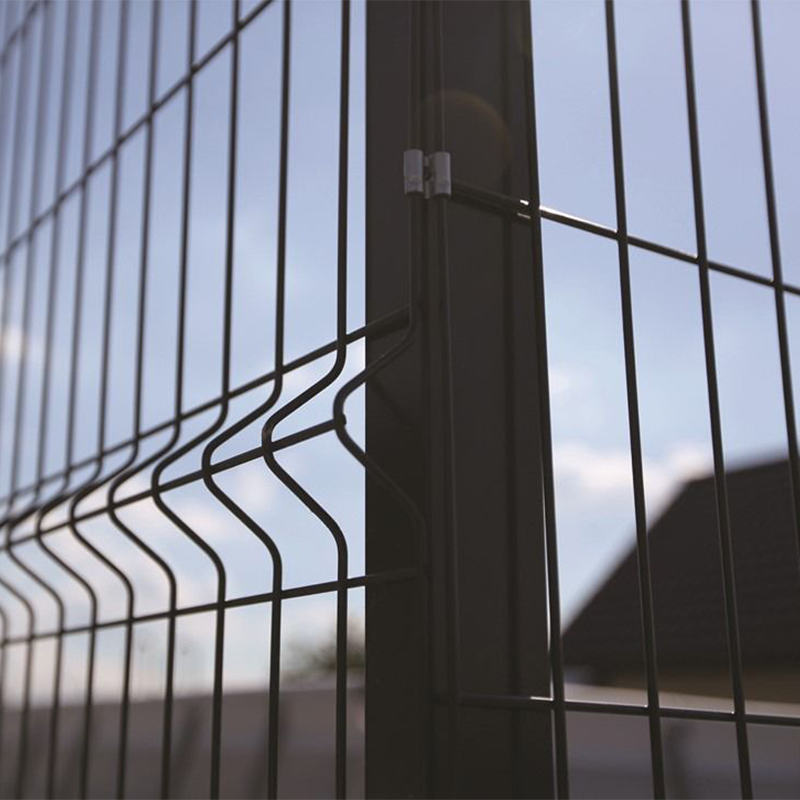Height and Anti-Climb Design for Maximum Security
Optimal Fence Height for Intruder Deterrence
Getting the right height for security fences matters a lot when trying to keep intruders away. Most folks in the business recommend something around 6 to 8 feet tall because that seems to work pretty well at stopping break ins. Experts back this up too since fences at this height create both real barriers and mental blocks for anyone thinking about getting past them. Something important to remember though is that what counts as acceptable can vary depending on where you live. Local laws might set specific limits so checking those out before installation makes sense if we want our fence actually working properly. Taller fences have another advantage too they tend to scare off people who just wander in casually while making others think twice before attempting anything serious. Height really does make a difference both physically blocking access and sending a clear message that whatever lies beyond isn't easy pickings for would be thieves.
Anti-Climb Features: Spikes and Angled Tops
Adding anti climb features like spikes, barbed wire or slanted tops to fences makes them much more secure against intrusions. The whole point of these additions is to stop people from getting over the fence since climbing becomes really difficult. Studies have actually shown that properties with these kinds of deterrents see fewer break ins simply because would be intruders think twice before attempting to get past them. There is something important to remember though about some of these anti climb options. They need to follow local laws and safety standards otherwise property owners could face serious legal problems down the road. Compliance matters here because what works great for security shouldn't turn into a danger for anyone nearby. Take spikes for instance they work well at keeping folks away from climbing but there are strict rules about how high they need to be placed above ground level. Getting familiar with what's allowed locally and then installing these features properly helps maintain good security without running afoul of any regulations.
Durable Materials Enhancing Fence Longevity
Metal Fence Panels: Strength and Resistance
Metal fence panels pack serious strength and stand up against wear and tear better than most alternatives, which is why many homeowners opt for them when looking for something that lasts. Wood and vinyl just cant compete when it comes to handling rough weather or accidental bumps and scrapes. Studies show wood fences tend to need replacing around every ten years give or take, whereas good quality metal fencing can stick around for thirty plus years with hardly any upkeep needed. What makes metal fencing really shine though is how versatile it actually is. For places needing heavy duty protection, thick steel options work wonders, while lighter aluminum varieties make great choices where looks matter more than brute force. Beyond keeping unwanted visitors out, these panels also boost curb appeal significantly without sacrificing functionality.
Aluminum Fence: Lightweight and Corrosion-Resistant
Aluminum fencing stands out because it's light yet won't corrode, making it ideal for places where there's lots of moisture or near the coast. Aluminum just doesn't rust, so these fences stay looking good even when salt air gets at them, something folks living by the beach really appreciate. Beyond being practical, aluminum fences actually look pretty sharp too. Many manufacturers offer designs that range from contemporary to traditional styles, so they fit right into almost any property whether it's a home or business setting. These fences handle all sorts of weather conditions without breaking down, which explains why so many people choose them when they want something durable that won't require constant maintenance. Homeowners and business owners alike find value in this balance between lasting quality and low hassle care requirements.
Reinforced Welded Mesh for Tamper-Proof Security
Welded mesh fencing with reinforcement is known for being tough to mess with, providing solid security because of how sturdy it's built. The mesh itself makes these fences really hard to break into or damage, which explains why they work so well at places needing extra protection such as correctional facilities and manufacturing plants. Research from the National Institute of Standards shows that when properly installed, welded mesh systems cut down on break ins by around 70% compared to other fence types. How these fences get put up matters a lot too. Skimp on the installation details and all those security benefits go right out the window. For businesses looking to protect warehouses or homeowners wanting better yard security, investing in quality welded mesh fencing means fewer headaches about intrusions and greater protection for what matters most.
Visibility and Monitoring Compatibility
Balancing Privacy with Clear Sightlines
Getting the right mix between security and privacy matters a lot when designing outdoor areas, especially ones surrounded by fencing. At first glance, privacy might look like it clashes with being able to see what's going on, but smart design makes them work together. Many homeowners find that adding see-through elements like glass panels (either clear or frosted) along with cleverly placed plants gives them their needed privacy while still letting light in and creating an open feel. Studies from urban planning departments indicate neighborhoods where people can actually see their surroundings tend to have fewer incidents of crime simply because would-be troublemakers don't want to be spotted. Putting in features that let folks watch over their property without feeling watched themselves creates safer living spaces. Good fence designs today focus on making sure residents feel protected but not trapped inside their own yards.
Chain-Link Fencing with Privacy Slats
Adding privacy slats to chain link fences works really well for folks who want better security and some privacy at the same time. The slats get attached between the links, so people outside can't see through easily but still allow light to pass through. This actually helps keep an eye on what's happening around property lines without making everything feel closed off. Most homeowners find these slats pretty straightforward to put in themselves. Plus there are tons of color choices available now. From earth tones that match natural landscapes to bold colors that stand out against urban backdrops, there's something for every setting. Some even come pre-painted so no extra work is needed after installation.
Privacy slats offer a budget friendly way compared to putting up solid fences from scratch. The great thing is these slats fit right onto existing chain link fences without needing to tear everything down first. That saves thousands on materials and labor costs while avoiding weeks of disruption during installation. Homeowners who want some privacy without breaking the bank find this combo works well. Chain link with added slats gives decent visibility control plus maintains basic security features at a fraction of what full privacy fences would cost.
Integration with Advanced Security Technology
Security Cameras and Motion-Activated Lighting
Adding security cameras along with motion sensors to fence systems makes a big difference for home protection. These devices offer live video feeds and bright lights that scare off most would-be burglars before they even get close. Take one suburban area in Georgia where folks installed similar tech across the community - local police reported around a 25-30% drop in break-ins within six months. When it comes to camera choices, homeowners have plenty to pick from nowadays. The IP models stand out with their crystal clear pictures and ability to see in low light conditions. As for lighting solutions, there's everything from solar powered options that save on electricity bills to units with adjustable sensitivity so they only trigger when needed. This combination not only catches unwanted visitors red handed but also gives property owners peace of mind knowing their homes are better protected against intrusion attempts.
Access-Controlled Gates and Smart Lock Systems
Security fences today just aren't complete without access controlled gates and those fancy smart lock systems. These additions really step up the game when it comes to protecting properties. Take for instance gates with keypads or cards to get through – they offer pretty solid security against intruders. And let's not forget about all the cool stuff happening with smart locks now. People can actually control who gets in from their phones, check who came and went in real time, all sorts of neat features that make managing entry points so much easier. Security pros have been talking about how good these tech solutions are at keeping unwanted folks out. A well known security expert recently mentioned something interesting: places where this kind of tech is used regularly see around 40% fewer break ins compared to others. Mixing old school fencing methods with modern tech gives property owners actual peace of mind knowing their stuff stays safe most of the time.
Temporary vs. Permanent Security Fencing Solutions
Temporary Fence Applications for Short-Term Needs
When security needs are only temporary, fencing solutions work really well across different situations. Think about events happening outdoors, ongoing construction projects, or unexpected emergencies where something needs to be secured quickly. Temporary fences stand out because they go up fast and come down just as easily. That makes them super practical when security requirements change from day to day. At music festivals or building sites, these fences do a great job keeping people who shouldn't be there away while making sure everyone else stays safe. The whole point is to have something that works now without needing permanent structures that would cost extra money later on.
Temporary fencing often makes use of lightweight metal panels alongside tough plastic mesh because they're cheap to buy and simple to move around. The metal sections stand up pretty well to wear and tear yet can be shifted when security requirements shift from one day to the next. Plus, since these panels don't break the bank and can be reused multiple times, many companies find them economically smart for regular event setups or construction sites needing quick perimeter solutions. No wonder then that contractors and event organizers keep coming back to temporary fencing options whenever they need something flexible enough to adapt but still strong enough to do the job right.
Garden Fence Panels: Aesthetic and Functional Uses
More and more people are putting up garden fence panels these days because they serve two main purposes at once beautifying yards and keeping things secure. Homeowners love how these fences look while still getting the protection they need around their property. There's actually quite a range of options available now from different woods to metals and even composite materials so folks can find something that fits right into their landscape design without sacrificing on security basics. Take aluminum fences for example. When properly installed, they really do complement contemporary homes pretty well. The sleek lines just seem to merge with modern architecture while still standing strong against intruders.
Garden fences come in all sorts of materials these days wood, metal panels, even vinyl stuff that looks real nice but lasts forever. People love putting up decorative fences around their yards right now. It's part of this bigger movement where folks want their outside spaces to look good while still keeping things secure. More homeowners are going for those fancy fence options because they stop unwanted visitors and make the whole property look better when someone drives by. These fences aren't just about looking pretty though. They actually work as barriers and can really boost property value too. We're seeing a change in how people think about yard design lately, blending looks with protection so nobody feels like they have to choose between safety and style.



